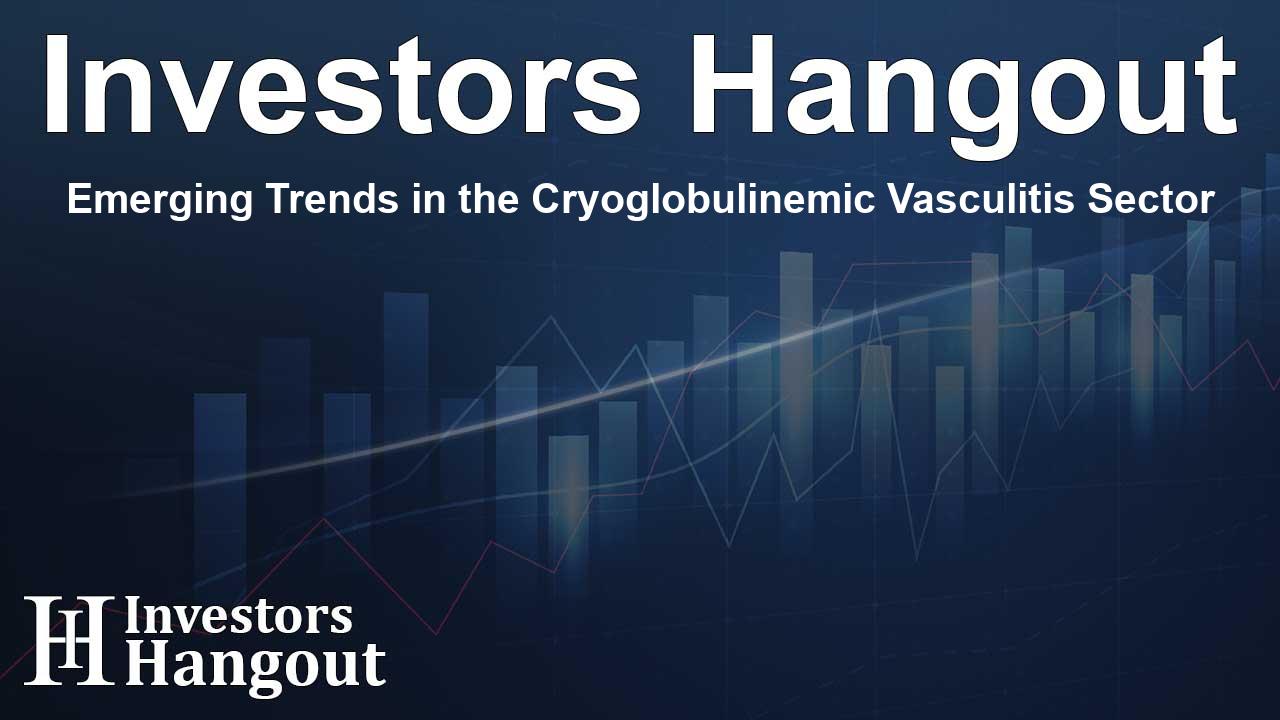Emerging Trends in the Cryoglobulinemic Vasculitis Sector

Overview of the Cryoglobulinemic Vasculitis Market
The global cryoglobulinemic vasculitis market is witnessing remarkable growth, poised to reach an estimated valuation of US$ 930.1 million by 2034, fueled by a robust compound annual growth rate (CAGR) of 6.9%. This considerable expansion reflects heightened attention to innovative approaches in treatment and an enriched understanding of the condition.
Understanding Cryoglobulinemic Vasculitis
Cryoglobulinemic vasculitis is a rare autoimmune disorder characterized by inflammation of small blood vessels, which can lead to severe systemic symptoms. The condition, often linked with chronic issues like hepatitis C, requires timely intervention to prevent serious complications such as skin ulcers, neuropathy, and kidney damage. The evolution in treatment methods, especially the introduction of targeted biologic therapies, represents a significant advancement in managing this complex disease.
Recent Innovations and Pharmaceutical Focus
Pharmaceutical giants are investing heavily in biologic treatments that address the pressing needs within the CryoVas patient community. Roche, a frontrunner in this space, has achieved notable successes with its monoclonal antibody, Rituxan. Clinical trials have demonstrated that rituximab efficacy not only reduces flare-up rates but also enhances the overall quality of life for those affected by the disease. Other companies, such as Amgen, are also developing similar innovative therapies, continuing a trend toward personalized medicine.
Market Growth Drivers and Challenges
The cryoglobulinemic vasculitis market is driven by several key factors, including an increase in autoimmune disease cases and rising awareness about hepatitis C-related cryoglobulinemia. The pharmaceutical industry is actively engaged in developing new drugs, particularly in the realm of biologic therapies which allow for more personalized treatment options. Additionally, collaborations between biopharmaceutical companies and research institutions are critical for uncovering new therapeutic pathways, offering hope for more effective treatments in the near future.
Key Trends Influencing Market Dynamics
The projected growth of the cryoglobulinemic vasculitis market is informed by emerging trends that include technological advances in diagnostics and an enhanced focus on research and development. Accurate and timely diagnosis can lead to better patient outcomes, making innovative diagnostic tools essential in the fight against CryoVas. This growing capacity supports not just early intervention but also the application of targeted therapies that can drastically change disease progression.
Investment in Research and Collaborative Efforts
Investment in research has seen a significant uptick, ensuring continuity in drug discovery and the development of effective therapies. Key industry players are not only increasing their research efforts but are also forming strategic alliances. For instance, GlaxoSmithKline's collaboration with academic institutions aims to introduce novel biologic agents and improve treatment standards for CryoVas. Decisions like these underscore the commitment to bridging existing gaps in therapy availability.
Future Projections and Opportunities
The future of the cryoglobulinemic vasculitis market is bright, with numerous opportunities on the horizon. New therapeutic agents addressing both hepatitis C-linked and non-linked CryoVas cases are being developed, with projections for at least three new biologic therapies to hit the market by 2028. This momentum will be crucial for companies like Amgen and Roche, who are heavily investing in research and local partnerships to solidify their market presence.
Summing Up Market Opportunities
With a rise in cryoglobulinemia cases, particularly in the Asia-Pacific region, companies are strategically positioning themselves to take advantage of this increasing market demand. Ongoing developments and the push for innovation in the cryoglobulinemic vasculitis sector will inevitably enhance market share and create a more dynamic healthcare landscape for affected patients.
Frequently Asked Questions
What is cryoglobulinemic vasculitis?
Cryoglobulinemic vasculitis is an autoimmune disease characterized by inflammation of small blood vessels, often associated with chronic conditions like hepatitis C.
What are the key drivers for the growth of this market?
The growth is driven by increased autoimmune disease prevalence, advancements in biologic therapies, and strategic collaborations among pharmaceutical companies.
What notable companies are involved in this market?
Key players include Amgen, Roche, and GlaxoSmithKline, among others, who are innovating in the development of targeted therapies.
What impact does early diagnosis have on cryoglobulinemic vasculitis?
Early diagnosis is crucial for improving patient outcomes, as it allows for timely intervention and the initiation of targeted therapies.
How does the future look for treatments in this market?
The market forecast predicts significant growth, with at least three new biologic therapies expected by 2028, enhancing treatment options for patients.
About The Author
Contact Thomas Cooper privately here. Or send an email with ATTN: Thomas Cooper as the subject to contact@investorshangout.com.
About Investors Hangout
Investors Hangout is a leading online stock forum for financial discussion and learning, offering a wide range of free tools and resources. It draws in traders of all levels, who exchange market knowledge, investigate trading tactics, and keep an eye on industry developments in real time. Featuring financial articles, stock message boards, quotes, charts, company profiles, and live news updates. Through cooperative learning and a wealth of informational resources, it helps users from novices creating their first portfolios to experts honing their techniques. Join Investors Hangout today: https://investorshangout.com/
The content of this article is based on factual, publicly available information and does not represent legal, financial, or investment advice. Investors Hangout does not offer financial advice, and the author is not a licensed financial advisor. Consult a qualified advisor before making any financial or investment decisions based on this article. This article should not be considered advice to purchase, sell, or hold any securities or other investments. If any of the material provided here is inaccurate, please contact us for corrections.
